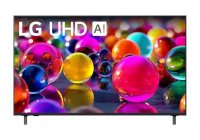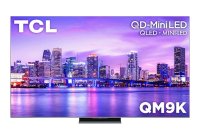How Do I Remove Ghosting or Motion Blur from My TV Screen?
Have you noticed trails following fast-moving objects on your TV screen? Or perhaps blurry images during action scenes or sports broadcasts? This effect is commonly known as ghosting or motion blur—and it's a frequent issue with many modern TVs.
In this blog, we’ll explore what causes ghosting or motion blur, and more importantly, how you can fix it with a few simple adjustments.
What Is Ghosting or Motion Blur?
Ghosting:
This happens when previous frames linger on the screen, creating a faint double image or shadow—especially noticeable during scenes with fast motion or high contrast.
Motion Blur:
This refers to a general softness or smearing of moving objects, making them appear less clear or sharp than stationary ones.
Common Causes of Ghosting and Motion Blur
Slow pixel response time (common in LCD/LED TVs)
Low refresh rate
Incorrect motion settings
Poor video signal or HDMI cable
Interference from external devices
How to Fix Ghosting or Motion Blur on Your TV
1. Turn On or Adjust Motion Smoothing Features
Most TVs include motion enhancement settings like:
MotionFlow (Sony)
TruMotion (LG)
Auto Motion Plus (Samsung)
MEMC (Motion Estimation, Motion Compensation)
Adjusting these settings can help reduce blur. However, excessive motion smoothing may cause an unnatural “soap opera effect.â€
2. Enable “Game Mode†or “PC Modeâ€
These modes reduce processing time and input lag, minimizing ghosting:
Settings → Picture → Picture Mode → Game Mode or PC Mode
This is especially helpful when connecting a gaming console or computer.
3. Reduce Backlight and Brightness Levels
High backlight and brightness can exaggerate blur. Try lowering:
Backlight
Brightness
Sharpness
Over-sharpening may add visual artifacts that resemble ghosting.
4. Disable Noise Reduction and Image Processing Features
Features like Digital Clean View, Noise Reduction, and Dynamic Contrast can interfere with motion clarity. Disabling them can improve overall motion performance.
5. Check and Replace HDMI Cables
A poor-quality HDMI cable can cause display issues. Ensure you're using a high-speed HDMI 2.0 or higher cable compatible with your TV’s resolution and refresh rate.
6. Update Your TV’s Firmware
Manufacturers often release firmware updates that fix performance and display issues:
Settings → Support → Software Update → Check for Updates
Keeping your TV up to date helps improve picture processing.
7. Adjust Refresh Rate (For PC Users)
When using your TV as a computer monitor, ensure the refresh rate is correctly set on your computer to match the TV's native rate:
Windows: Display Settings → Advanced Display Settings → Refresh Rate
Understanding Panel Limitations
Some types of TV panels naturally handle motion better:
IPS panels: Better color, moderate response times
VA panels: Higher contrast, but more prone to ghosting
OLED panels: Best for motion clarity due to fast pixel response times
If your TV is older or an entry-level model, hardware limitations may reduce the effectiveness of these fixes.
Conclusion
Motion blur and ghosting can significantly affect your viewing experience, especially during fast-paced scenes. However, by optimizing your TV’s settings and checking your hardware, you can reduce or even eliminate these issues for smoother and clearer visuals.



